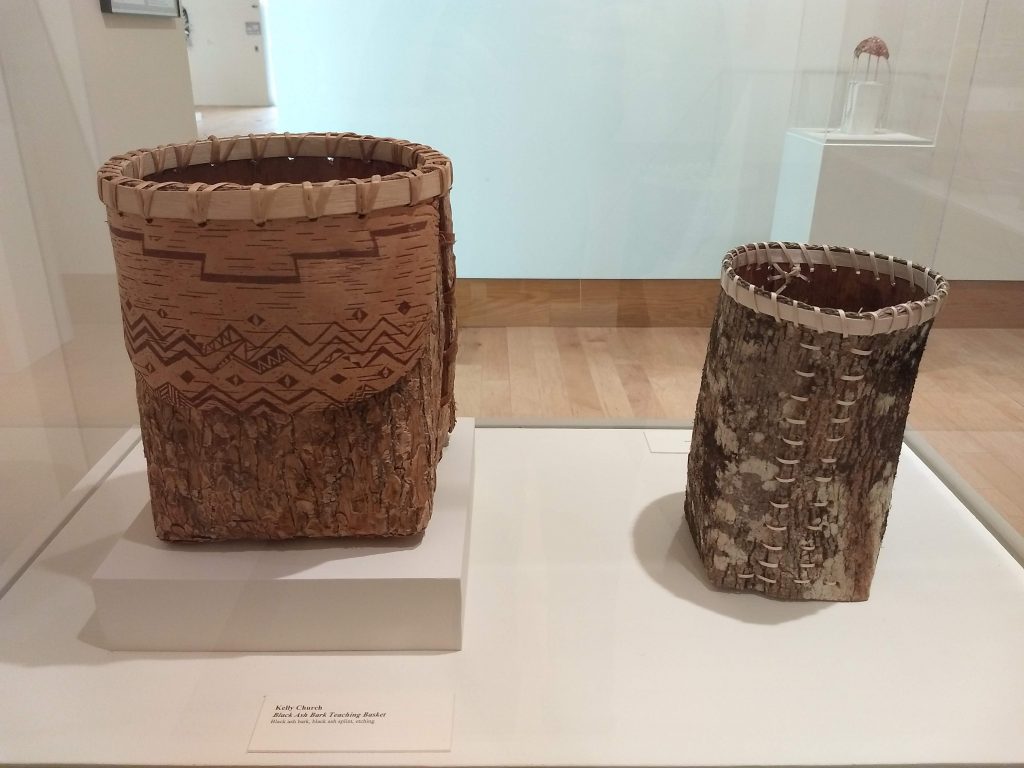by Bradley Clements
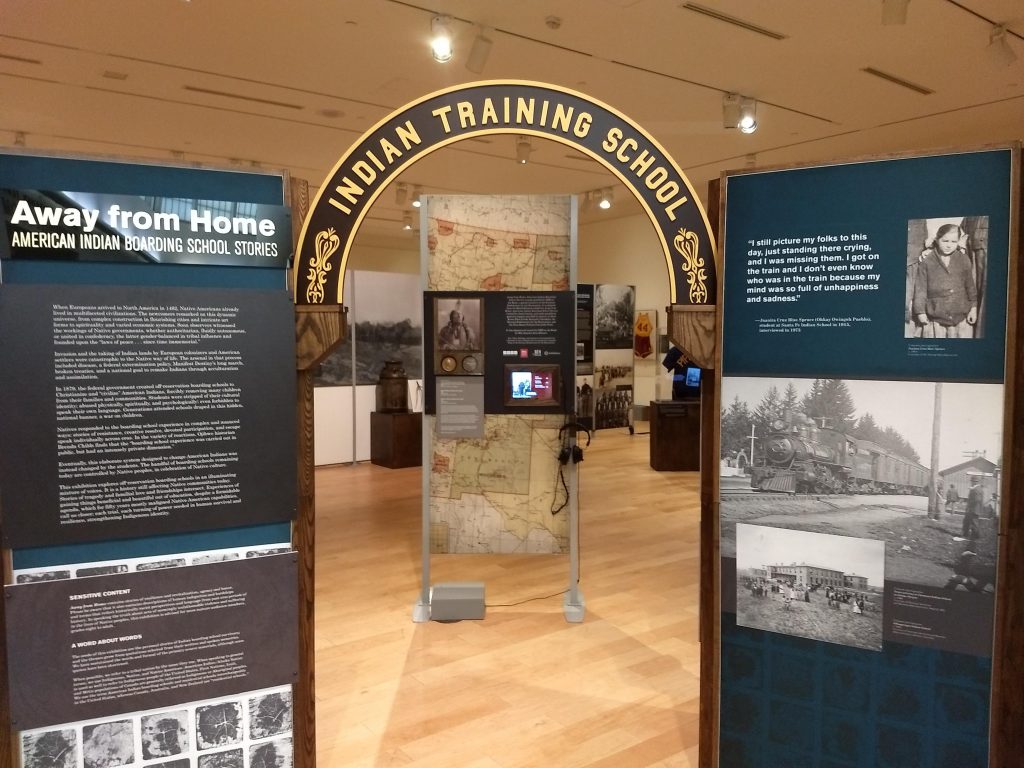
Away from Home: American Indian Boarding School Stories touches on many experiences of Indian boarding schools throughout the USA over their history from 1879 to the present. The exhibition emphasizes the agency of Indigenous peoples and children in resisting and reshaping these institutions. It features extensive didactic texts and archival images, as well as video interviews with Indigenous scholars and former boarding school students, and historical items and props.
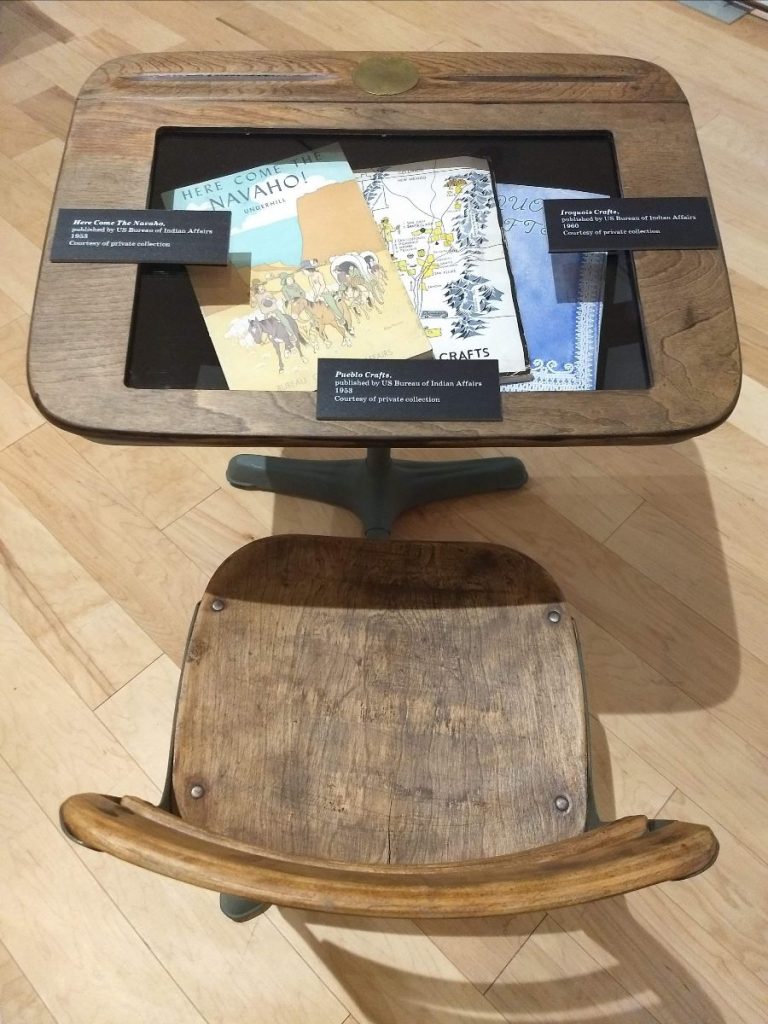
The range of topics and experiences spanning the 142-year history in this ambitious exhibition can be overwhelming, especially when being adapted to new spaces in its travels across the USA. The exhibition does not simplify this diversity, setting evidence of the system’s violence next to testimonies of the use of school experiences to Indigenous ends. Nevertheless, commonalities emerge across this long American history, with parallels in Canada: the genocidal intent of the system’s formation, for the colonization of Indigenous land, and the responses of Indigenous peoples to resist these aims.
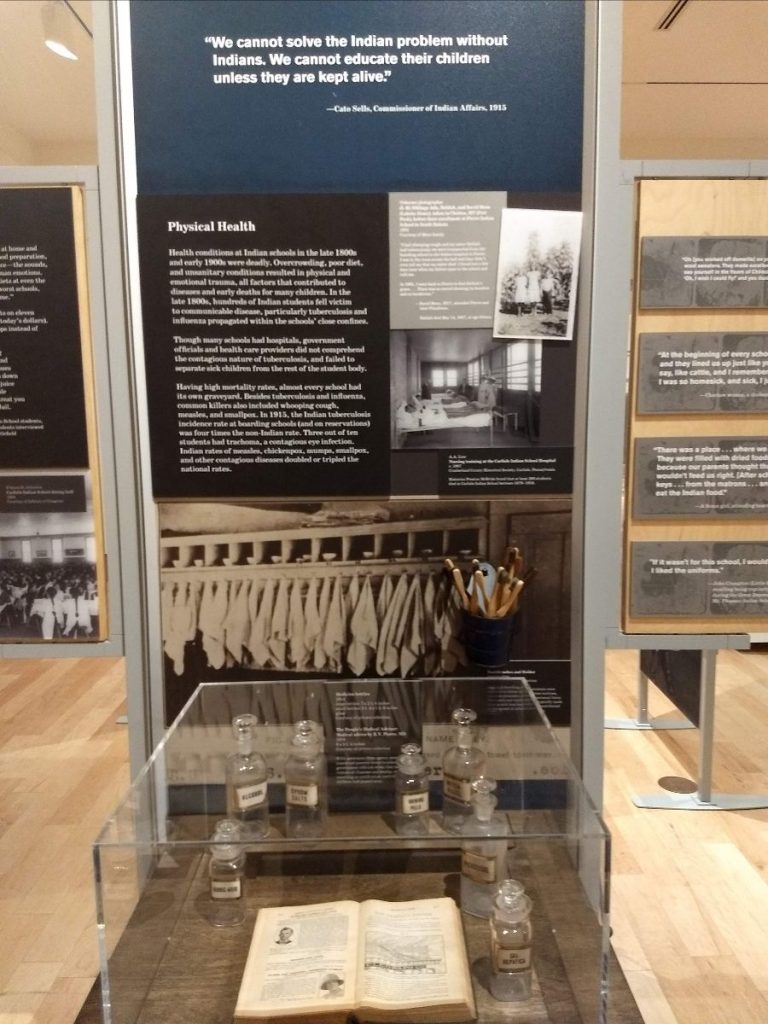
Away from Home was curated at the Heard Museum by Janet Cantley, as a travelling iteration of the Museum’s long-standing and influential Remembering Our Indian School Days: The Boarding School Experience. It is visiting the Dennos Museum Center on the campus of Northwestern Michigan College in Traverse City from September 1 to October 20, 2021.
The exhibition and its local installation have been informed by committees of outstanding Indigenous experts, including Anishinaabek heritage experts Brenda Child and Eric Hemmenway.
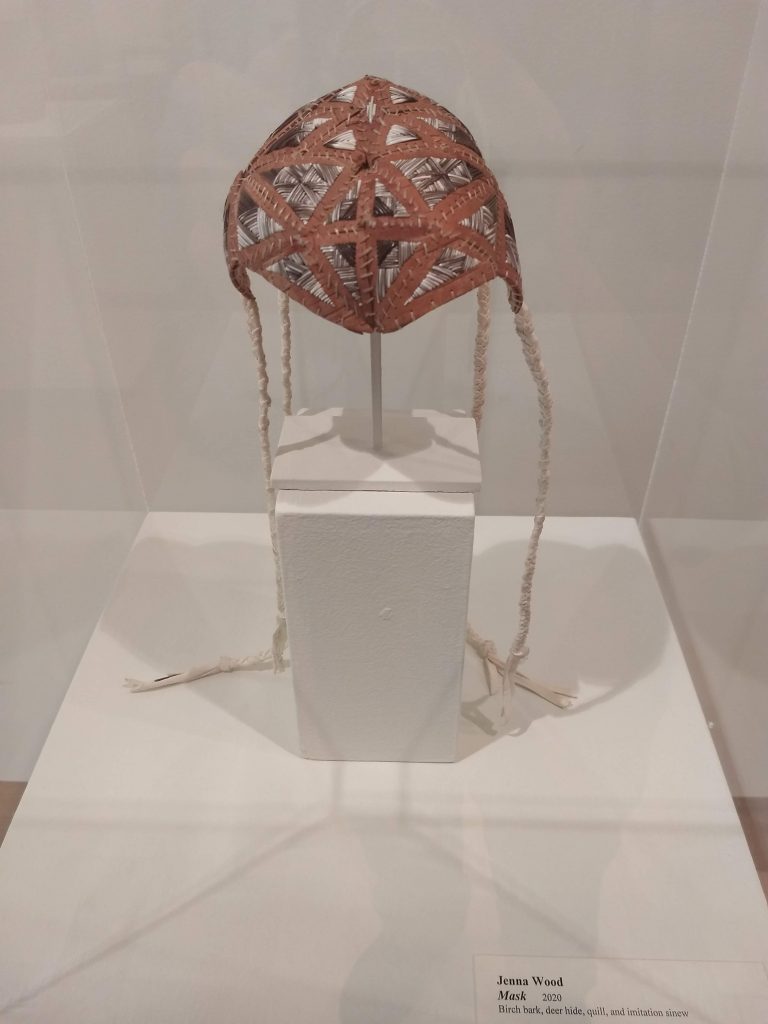
Importantly, the Dennos Museum Center paired Away from Home with Close to Home: Contemporary Anishinaabek Artists, a small exhibition of recent works by local Anishinaabek women and two spirit artists. The art of Kelly Church, Reneé Dillard, Jamie John, Yvonne Walker Keshick, and Jenna Wood is also paired with older pieces from the Dennos collections.
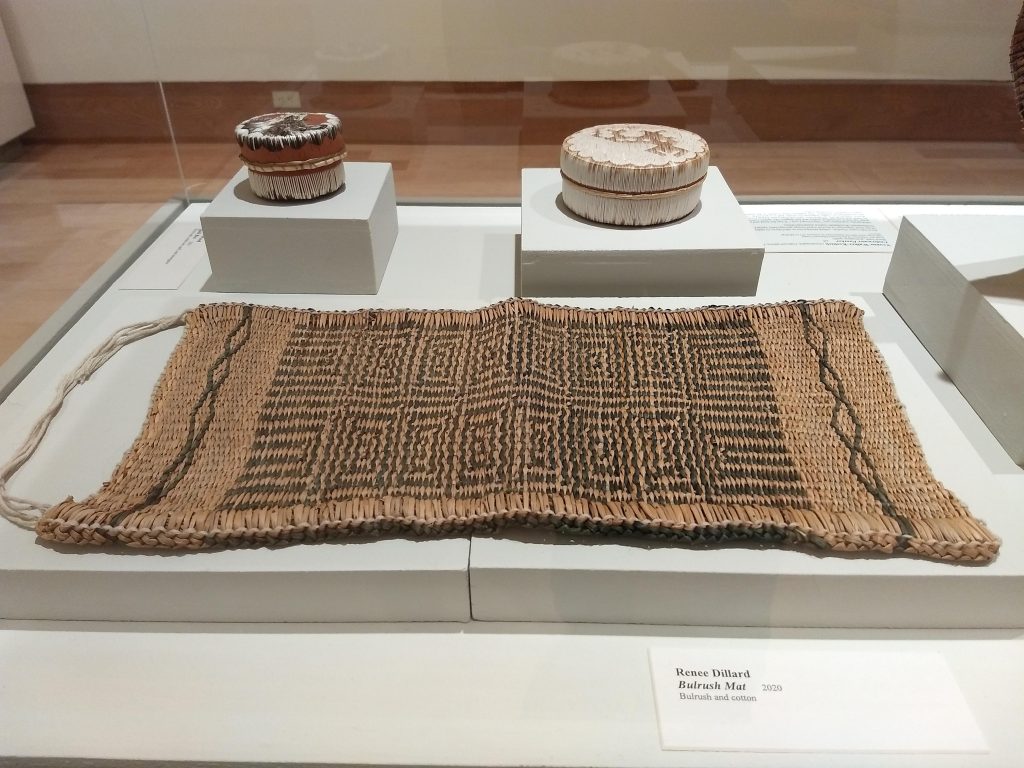
Following Away from Home, the artists showcased in Close to Home make it clear that the genocides of which Indian boarding schools were a part did not succeed. Works such as Jenna Woods’ Mask (2020), use intergenerational techniques of working birch bark, porcupine quills, and sinew to form a symbol of the times we all navigate today: a face-covering to protect against COVID-19. Securing Anishinaabek futurities and resisting ongoing colonial forces like climate change and ecosystem destruction, Kelly Church’s Black Ash and Birch Teaching Baskets (n.d.) are inscribed in their interiors with instructions for maintaining relationships with these trees through basket-making in tumultuous times. These baskets literally carry teachings.
These artworks hit close to home in more ways than one: the artists and materials are local to the area, the messages relate to the times in which we are living, and the issues touch on intimate, emotional, and unresolved struggles.
Close to Home: Contemporary Anishinaabek Artists is on view at the Dennos Museum Center from September 1 until October 31, 2021.
